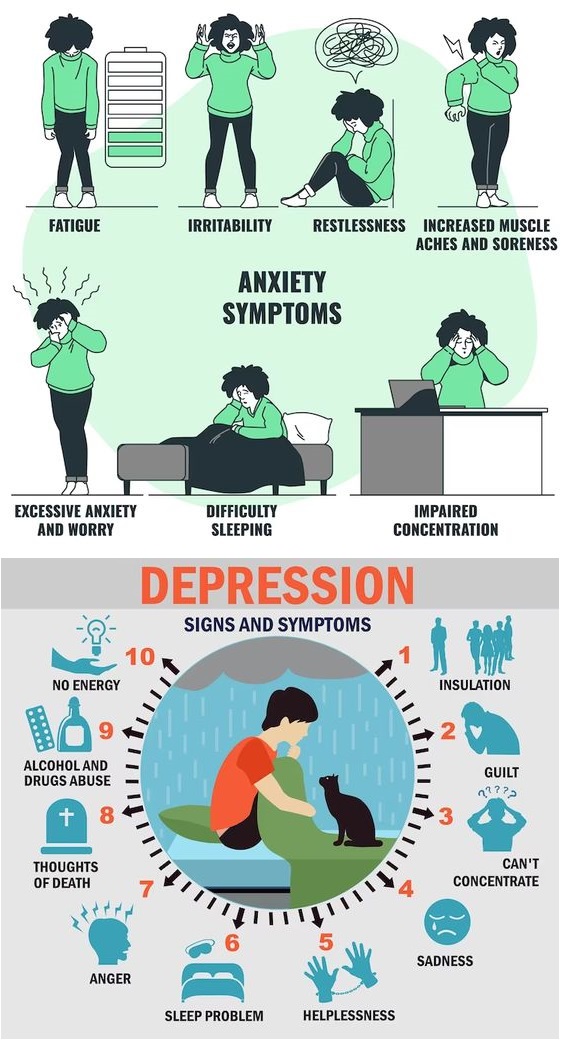Practicing with challenging NCLEX Questions prepares students to handle complex patient situations and critical thinking scenarios.
NCLEX Nursing Management of Anxiety Questions
Nursing Management of Anxiety NCLEX Practice Questions
Question 1.
Mr. B is a 25-year-old man who has been experiencing symptoms of depression. He has difficulty communicating with others and feels disconnected from his community. The therapist caring for Mr. B is considering implementing milieu therapy as part of his treatment plan.
What is the primary goal of milieu therapy for Mr. B?
(a) To develop self-awareness and self-confidence
(b) To change maladaptive behaviors
(c) To establish a strong therapeutic relationship
(d) To correct distorted concepts and dysfunctional beliefs
Answer:
(a) To develop self-awareness and self-confidence
Explanation:
Milieu therapy is a form of treatment in which a team of hospital staff, including nurses, doctors, therapists, psychiatrists, and psychologists, work to create a meaningful relationship with the patient and help them to interact in a community setting. The goal of milieu therapy is to help the patient develop values such as self-awareness and self-confidence through these interactions.
Other forms of therapy, such as interpersonal therapy, behavior therapy, and cognitive therapy, may also be helpful in treating depression and other mental health issues, but they have different goals and focus on different aspects of the patient's experience. The primary goal of milieu therapy is to help the patient develop values such as self-awareness and self-confidence through interactions with a team of hospital staff in a community setting.
Rationale:
Option (a) (to develop self-awareness and self-confidence) is the most appropriate answer because it is the primary goal of milieu therapy. Option (b) (to change maladaptive behaviors) is more appropriate for behavior therapy. Option (c) (to establish a strong therapeutic relationship) is more appropriate for interpersonal therapy. Option (d) (to correct distorted concepts and dysfunctional beliefs) is more appropriate for cognitive therapy.
Question 2:
Mr. B is a 45-year-old man who has been experiencing symptoms of depression for the past several months. He has difficulty with self-confidence and has been engaging in maladaptive behaviors such as overeating and procrastination. Mr. B's therapist recommends a course of treatment that includes both cognitive therapy and behavior therapy.
Which of the following techniques may be used as part of Mr. B's behavior therapy treatment?
(a) Desensitization
(b) Aversion therapy
(c) Modelling
(d) All the above
Answer:
(d) All the above
Explanation:
Behavior therapy is a type of treatment that is based on the theories of classical conditioning and operant conditioning and is used to change maladaptive behaviors and reinforce desirable ones. Techniques such as desensitization, aversion therapy, and modelling may be used as part of this treatment. Desensitization involves gradually exposing the patient to their fears in order to help them confront and overcome them.
Aversion therapy involves pairing undesirable behavior with an aversive stimulus in order to decrease the frequency of that behavior. Modelling involves watching others perform a behavior in order to model and change one's own behavior. All of these techniques may be helpful in treating Mr. B's depression and maladaptive behaviors.
Rationale:
Option (a) (desensitization) is a technique that can be used to treat phobias and anxieties by gradually exposing the patient to their fears. Option (b) (aversion therapy) involves pairing undesirable behavior with an aversive stimulus in order to decrease the frequency of that behavior.
Option (c) (modelling) involves watching others perform a behavior in order to model and change one's own behavior. All of these options (a, b. and c) are techniques that may be used as part of behavior therapy treatment. Therefore, the correct answer is Option (d) (all of the above).
Question 3.
Mr. B is a 25-year-old man who has been experiencing symptoms of depression and anxiety. He has struggled with negative thoughts and feelings of worthlessness, and has difficulty communicating with others. His therapist has recommended that he try cognitive therapy to help him correct his distorted thinking and beliefs.
Which of the following is NOT a goal of cognitive therapy?
(a) Changing negative thoughts and beliefs
(b) Improving communication skills
(c) Modifying behavior through punishment or reinforcement
(d) Focusing on past experiences rather than present problems
Answer:
(d) Focusing on past experiences rather than present problems
Explanation:
Cognitive therapy is a short-term form of psychotherapy that aims to change negative thoughts and beliefs and improve communication skills in order to address present problems and improve emotional well-being. It does not involve punishment or reinforcement as a means of behavior modification, as is the case with operant conditioning.
Instead, it focuses on correcting distorted concepts and dysfunctional beliefs in order to improve the client's emotional and mental health. Cognitive therapy can be used to treat a variety of mental health issues, including anxiety and depression.
Rationale:
Option (a) (changing negative thoughts and beliefs) and option (b) (improving communication skills) are both goals of cognitive therapy. Option (c) (modifying behavior through punishment or reinforcement) is a goal of operant conditioning, which is a different type of therapy.
Option (d) (focusing on past experiences rather than present problems) is incorrect because cognitive therapy focuses on present thinking, behavior, and communication rather than on past experiences.

Question 4.
A patient has recently been admitted to the hospital with symptoms of anxiety and posttraumatic stress disorder (PTSD). The patient is experiencing difficulty expressing their feelings and seems to be struggling with feelings of hopelessness and self-harm. The nurse assigned to the patient recognizes the need to create a calm and relaxing environment in order to facilitate communication and help the patient decrease their anxiety.
Which of the following is NOT a coping mechanism for posttraumatic stress disorder?
(a) Support groups
(b) Mileau therapy
(c) Hypnotherapy
(d) Physical exercise
Answer:
(d) Physical exercise
Explanation:
Option (a) Support groups is taken as a coping mechanism for posttraumatic stress disorder, as it involves a team of hospital staff, including nurses, doctors, therapists, and psychologists, working together to create meaningful relationships with the patient in a community' setting.
Option (b) Mileau therapy is also taken as a coping mechanism, as it involves the same team of hospital staff working together to help the patient develop values such as self-awareness. self-confidence, and decent behavior.
Option (c) Hypnotherapy is also taken as a coping mechanism, as it involves the patient expressing and realizing their deep-seated fears and anger and being guided by a hypnotherapist to change. However,
option (d) Physical exercise is not taken as a coping mechanism for posttraumatic stress disorder in the passage. Therefore, the correct answer is (d) Physical exercise.
Question 5.
Mrs. Arisha is a 35-year-old woman who was recently involved in a car accident. She has been experiencing symptoms of posttraumatic stress disorder, including anger, sadness, and a lack of control over her emotions. The nurse caring for Mrs. Arisha has noticed that she seems to be having difficulty communicating about the cause of her anxiety and has expressed feelings of hopelessness and self-harm.
What is the most appropriate initial intervention for the nurse to implement for Mrs. Arisha's posttraumatic stress disorder?
(a) Prescribing medication for anxiety
(b) Referring Mrs Arisha to a support group
(c) Conducting hypnotherapy' sessions
(d) Teaching Mrs Arisha relaxation techniques such as deep breathing and meditation
Answer:
(d) Teaching Mrs Arisha relaxation techniques such as deep breathing and meditation
Explanation:
It is important for the nurse to focus on the needs of the patient and create a calming and relaxing environment in order to manage anxiety and posttraumatic stress disorder. This can be achieved through the use of relaxation techniques such as deep breathing and meditation.
These techniques can help the patient to feel more calm and in control of their emotions, which can in mm help to reduce anxiety and posttraumatic stress disorder symptoms. In addition to relaxation techniques, other coping mechanisms such as support groups and hypnotherapy may be helpful in managing posttraumatic stress disorder, but they are not always necessary or appropriate for all patients.
Rationale:
Option (a) (prescribing medication for anxiety) may be appropriate in some cases, but it is not the most appropriate initial intervention in this situation. Option (b) (referring Mrs. Arisha to a support group) may be helpful in the long-term, but it is not the most immediate and effective intervention for managing Mrs. Arisha's symptoms.
Option (c) (conducting hypnotherapy sessions) may be beneficial for some patients, but it is not the most appropriate initial intervention for all patients and may not be necessary in this case. Option (d) (teaching Mrs. Arisha relaxation techniques such as deep breathing and meditation) is the most appropriate initial intervention for managing Mrs. Arisha's posttraumatic stress disorder because it will help to create a calm and relaxing environment in which she can express her feelings and concerns.
